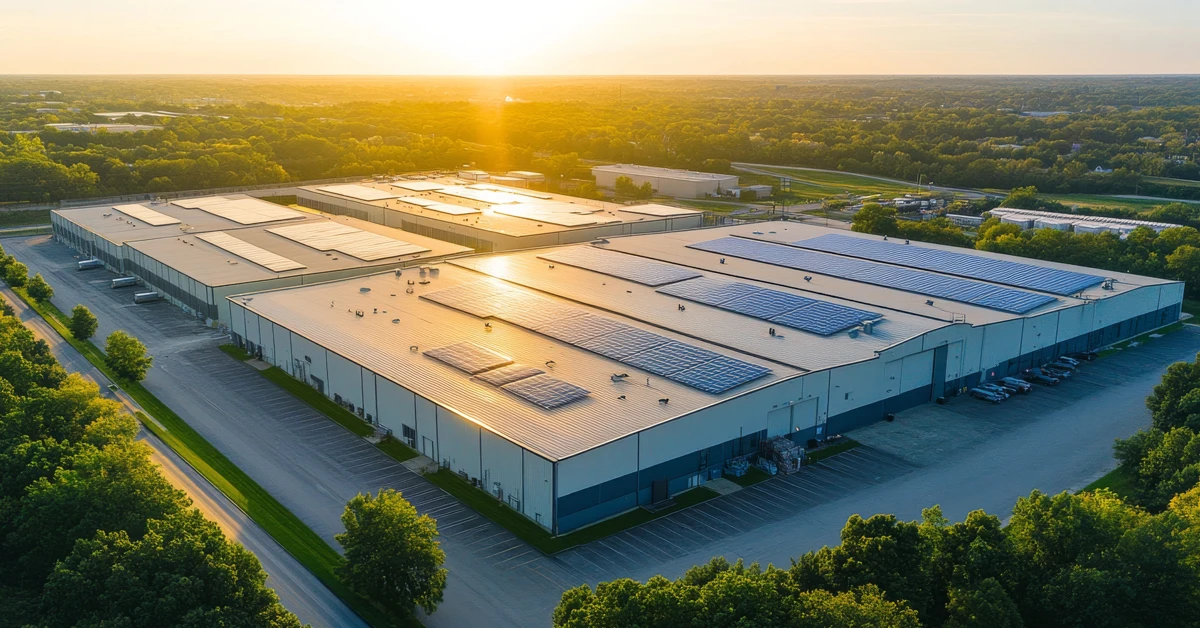If you’re a decision-maker at a commercial or industrial business, there’s a good chance solar energy has crossed your mind. Rising energy costs, sustainability pressures, and future-proofing operations make solar compelling. But the key question remains: “What government incentives make this investment viable?”.
The short answer? A lot. The long answer is a bit more complex.
The truth is, the world of government solar incentives is massive, complicated, and constantly changing. Federal programs set the foundation, but the real complexity kicks in when you add state and local opportunities into the mix. Some incentives depend on your location. Others depend on the type of project you’re building. And some are only available if you apply before the funding runs out.
And while these programs exist to make solar more affordable, the process of understanding what’s available and how to qualify can feel like a full-time job.
This guide breaks down the major government incentives available, helping you understand how to lower costs and leverage this rewarding landscape. Knowing how to use incentives makes solar smart for your bottom line, not just the environment.
What Are Government Solar Incentives?
At the most basic level, government solar incentives are programs designed to make solar energy more affordable. Solar project requires a real investment, and with the right financial support in place, the investment becomes a whole lot more doable.
For businesses, these incentives come in a few different forms:
- Tax credits that cut down your federal or state tax bill.
- Grants that cover a percentage of your project costs.
- Bonus incentives that give you extra savings if your project qualifies based on location, community impact, or energy production.
- Depreciation programs that help you recover your costs faster.
These elements work together to shrink upfront costs and boost your long-term return on investment (ROI). Many incentives can be “stacked,” meaning you might combine a 30% tax credit with a 10% bonus and potentially a grant.
However, the incentive landscape is constantly shifting. Deadlines change. New programs pop up. Eligibility rules get updated. Missing out on opportunities is easy if you’re not vigilant. That’s why businesses partner with experts who track these details. You need a solid game plan to maximize these benefits.
Primary Federal Solar Incentives for Businesses
Federal programs are the cornerstone of incentives, applying nationwide and forming the foundation of most commercial solar project financials. If you’re serious about lowering costs and maximizing ROI, these are the programs you’ll want to understand first.
Investment Tax Credit (ITC)
If you’ve heard anything about solar incentives, it was probably about the ITC because this is one of the most impactful programs available to businesses.
Here’s how it works:
- Currently, the ITC is offering a 30% tax credit on your total project costs. (including rooftop, ground-mount, canopies, and battery storage).
- Businesses claim it on their federal tax return.
- Direct Pay for Tax-Exempts: Nonprofits, municipalities, schools, etc., can receive the 30% credit as a direct cash refund from the government, leveling the playing field.
Bottom line: If you’re installing solar, the ITC is almost always part of the conversation.
Energy Communities Tax Incentive
If your business operates in an area that’s historically been tied to fossil fuels (e.g., former coal plant locations), it might qualify as an Energy Community under this federal program.
The Details:
- An additional 10% ITC bonus added on top of your standard tax credit.
- This could mean a total 40% federal tax credit based solely on location.
- Official maps determine eligibility, but navigating them can be tricky. Partnering with an expert helps clarify qualification.
Low-Income Communities Solar Tax Incentives
Similar to the Energy Communities bonus, this incentive is all about location—specifically, whether your solar project benefits a low-income community.
Depending on the details, your project could qualify for either:
- A 10% bonus for projects located in low-income areas.
- A 20% bonus for projects that directly benefit low-income households or are part of low-income housing initiatives.
These extra incentives aim to broaden access to clean energy savings and help stack incentives that can significantly offset solar investment costs.

Additional Federal Incentives to Maximize Savings
If the federal incentives we just covered are the foundation of your solar savings, these next programs are the boosters. Some of them work alongside the main incentives to push your ROI even higher. Others are alternative options that might make more sense depending on the size and scope of your project.
Either way, understanding how these fit into your solar strategy is key to making the most of your investment.
Modified Accelerated Cost Recovery System (MACRS)
MACRS isn’t a direct credit but a depreciation system allowing rapid cost recovery through accelerated tax deductions.
Why this matters:
- Solar systems qualify for a 5-year accelerated depreciation schedule.
- You can combine this with the ITC to double up on savings.
- Bonus depreciation allows deducting a large portion of their system’s cost in the first year (percentage varies by completion date).
When you stack MACRS on top of your other incentives, the financial impact is huge – often making solar a clear win.
Renewable Energy Credits (RECs)
While tax credits offer upfront savings, Renewable Energy Credits (RECs), sometimes called Solar Renewable Energy Credits (SRECs), provide an ongoing revenue stream.
- How they work: You earn one REC for every megawatt-hour (MWh) of clean electricity your system generates. These credits have monetary value and can be sold.
- Upfront REC Sales Strategy: Instead of selling RECs annually, you can sell multiple years’ worth (e.g., 15 years) at once at a locked-in rate. This provides immediate cash, dramatically shortening payback periods and boosting ROI.
- REC value varies by state and market, but it’s often a significant cost-saving measure.
When evaluating your solar project, always factor potential REC revenue into your analysis.
Clean Electricity Investment Tax Credit (Clean Electricity ITC)
The Clean Electricity ITC is designed to replace the traditional ITC down the road, as clean energy goals advance.
- It starts with a 6% base credit but can reach 30% by meeting specific labor, wage, and domestic content requirements.
- Additional bonuses (similar to ITC adders) are available for energy communities, low-income benefits, and domestic materials.
While complex, it ensures continued strong financial support for solar investments in the future.
Navigating State and Local Solar Incentives
Compared to federal programs, state and local incentives are highly variable. There’s no single answer; availability depends entirely on your specific location, project type, and timing—some funds deplete quickly.
Common forms of state and local incentives include:
- State tax credits that work alongside your federal tax incentives.
- Cash rebates, which can reduce upfront costs.
- Grants targeting specific project types (e.g., canopies, EV integration).
- Sales and property tax exemptions to help minimize the added costs of going solar.
Eligibility can be very specific (e.g., schools only, municipalities, high energy users, building type), which makes tracking this evolving landscape challenging.
At Melink Solar, we handle state and local incentives case-by-case. Programs change, funding runs out, new ones launch. The smartest approach is partnering with a team that does the legwork for you. We identify available incentives in your location and assess their financial impact, ensuring you don’t leave money on the table. These local programs can significantly impact total project cost.
How to Apply for Government Solar Incentives
Applying for incentives involves complexity, with different processes for federal, state, and local programs. Follow these best practices:
- Start with the Big Picture: Understand your project scope (location, business type, system size) to identify potential eligible incentives.
- Verify Eligibility: Use official maps/guidelines (or better yet, an expert partner) to confirm qualification for specific programs like Energy Communities or state grants.
- Gather Documentation Early: Prepare financial records, project specs, utility data, and tax info beforehand to streamline applications and avoid delays.
- Watch Deadlines: Some programs (like ITC) are tied to tax filings, while others (grants, state funds) have strict application windows and budget cycles you can’t miss.
- Lean on Experts: You have a business to run. Partnering with a solar expert like Melink Solar, who handles incentive navigation regularly, makes all the difference. We manage the process from identification to application submission.
Maximize Solar Incentives with the Right Partner
Government solar incentives are game-changers, not just bonuses. Combined correctly, they dramatically reduce solar investment costs. Add long-term energy savings, and the case for solar is compelling.
But you don’t have to navigate this complex, shifting landscape alone. Missing one detail can cost thousands. That’s why the right partner is crucial.
Melink Solar designs solutions that maximize every available incentive. We uncover opportunities, manage applications, and balance sustainability with strong financial returns. Whether starting out or deep in planning, we help you get the most from your investment.
Ready to see how government solar incentives can work for your business? Contact Melink Solar today to get started.

